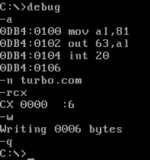Sorry if this is a dumb question, but is this maybe due to the slower clock of the ISA bus? I think that always works at 4.77 MHz and some other overhead may make the wait states necessary for anything using the ISA slots. I am just trying to learn more, so don't be shy about correcting any erroneous information I throw out.
Well, I suppose that's the big question

There wasn't really a standard for ISA bus clock speed in the early days. It ran at 4.77 MHz de facto on the IBM PC and early clones/derivatives, since it was connected synchronously to the CPU.
When the AT came round, it would run on 6 MHz, and later on 8 MHz, because they used 6 and 8 MHz 286 CPUs respectively, still synchronously.
When even faster ATs came around, it became obvious that many ISA cards had trouble, because they were never designed for such speeds.
Eventually the maximum speed of ISA was set to 8.33 MHz on most machines (the 'accepted maximum speed', see
http://www.pcguide.com/ref/mbsys/bios/set/advchISA-c.html), and it was connected with an asynchronous buffered bus.
Various chipsets allowed you to change the ISA bus speed via some dividers to get more performance at your own risk.
But what the speed of the bus is in 8088 'Turbo XT' class machines? I have no idea really. I would suspect that they'd err on the safe side and leave it at 4.77 MHz.
I'm pretty sure the PC10-III does not run it at 9.54 MHz, else you'd probably have issues with many cards.

